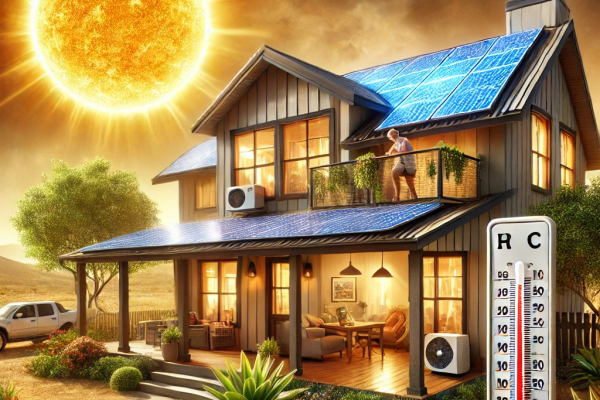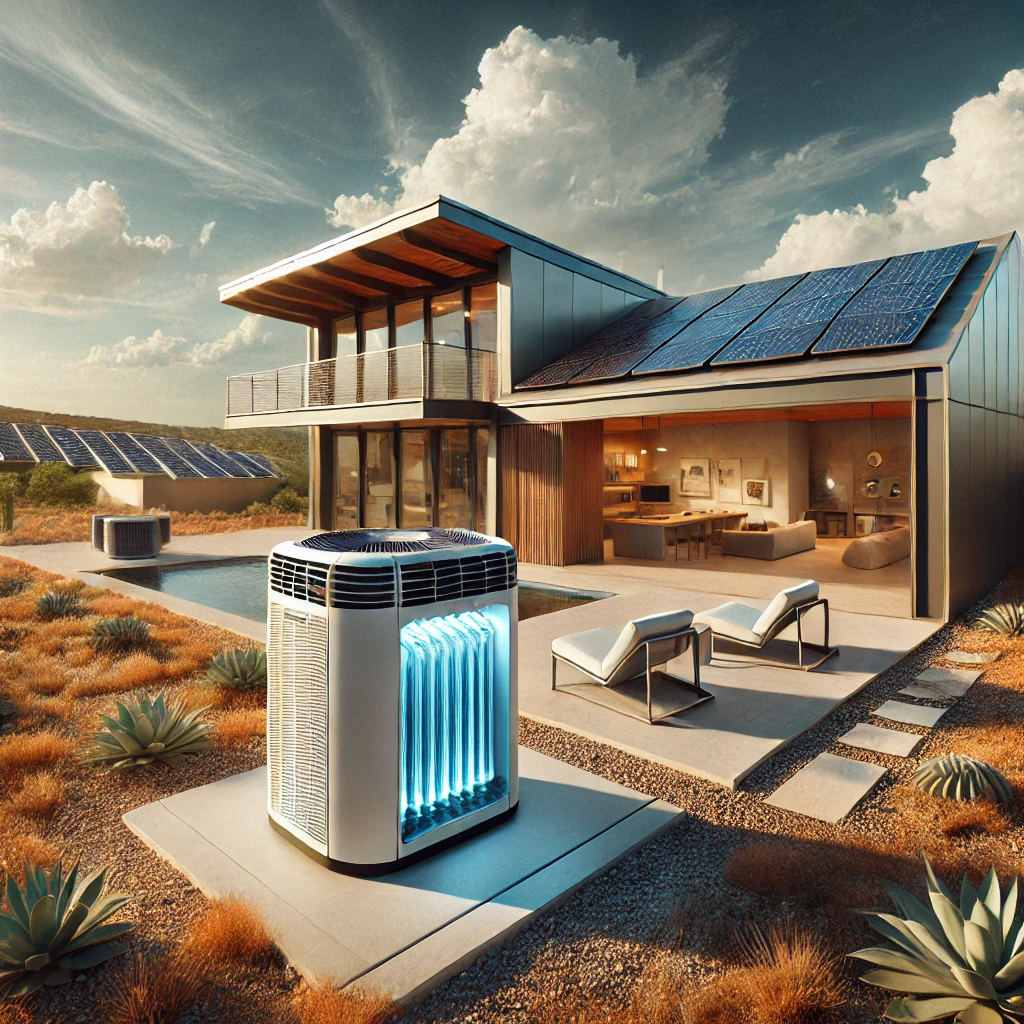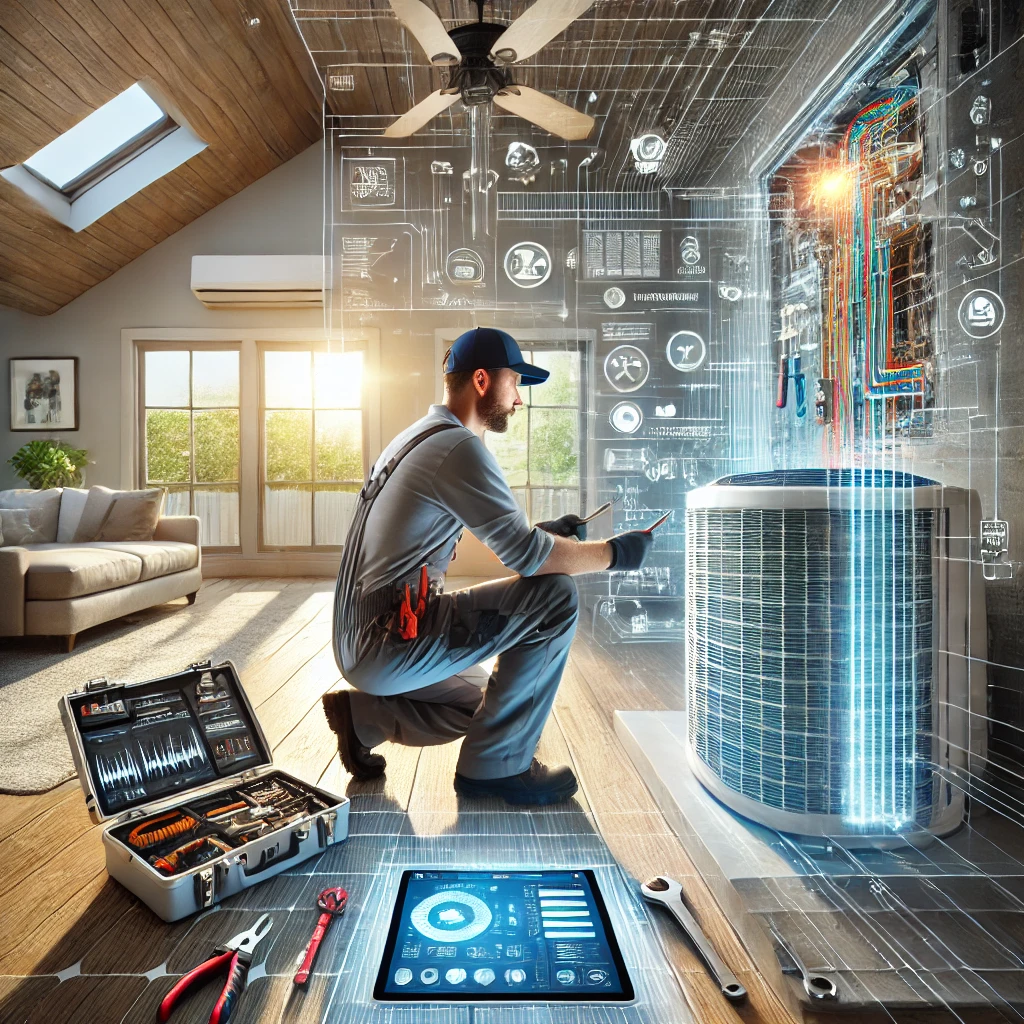
Air Conditioners: Salvation or Threat? Exploring Alternatives in the Texas Heat
Record-Breaking Heatwaves and the Growing Need for Cooling
In recent years, the planet has faced unprecedented temperature records. The scorching summer of 2023 was particularly memorable: Phoenix, Arizona, endured a streak of days exceeding 110°F (43.3°C), while Death Valley, California, recorded its historical maximum. In Iran, on the Persian Gulf coast, the heat index reached a staggering 152°F (66.7°C), and Beijing experienced relentless heat with temperatures surpassing 95°F (35°C).
These suffocating heatwaves are becoming more frequent and intense due to the climate crisis, and forecasts indicate a worsening trend unless the transition away from fossil fuels accelerates.
As people seek refuge from the unbearable heat, air conditioners are in higher demand than ever. According to the International Energy Agency, the number of air conditioners worldwide could increase by 244% by 2050, and in the U.S., demand may rise by 59%, as analyzed by Climate Central in 2020.
While air conditioners can be life-saving—considering that extreme heat is the deadliest form of extreme weather in the U.S.—their widespread use also comes with significant drawbacks.
Accessibility and Energy Consumption Challenges
Cost and Availability
Air conditioners remain expensive to purchase and operate, making them inaccessible to low-income communities in the U.S. and globally. Studies show that lower-income households are significantly less likely to have access to cooling technologies. In 2019, it was estimated that between 1.8 and 4.1 billion people in developing countries regularly facing dangerously high temperatures lack access to cooling solutions.
“In many parts of the world, we are concerned that those who need air conditioning the most do not have access to it,” says Narasimha Rao, a professor of energy systems at Yale University.
Strain on Power Grids
Additionally, air conditioning places a strain on power grids, which can be risky. A recent study found that if Phoenix, Arizona, experienced a five-day heatwave combined with a power outage, over 50% of the city’s population (1.4 million people) could end up in emergency rooms.
Efforts are being made to make air conditioning more accessible and improve grid reliability. However, another major concern remains—air conditioners contribute to global warming.
Environmental Impact of Air Conditioners
Energy Consumption and Fossil Fuels
Air conditioners consume vast amounts of energy. According to the International Energy Agency, cooling technologies, including air conditioners, will be the largest driver of rising energy demand through 2050. This is problematic because much of the world’s energy still comes from fossil fuels. In the U.S., summer months have seen record-breaking daily gas consumption, with air conditioners being a key factor.
Greenhouse Gas Emissions
Most air conditioners use hydrofluorocarbons (HFCs) as refrigerants—potent greenhouse gases thousands of times more effective at trapping heat than carbon dioxide.
Some air conditioners now use more eco-friendly refrigerants, such as hydrofluoroolefins (HFOs), though they also pose environmental risks. Other alternatives, including ammonia and propane, can be hazardous if leaked.
Companies are also developing new refrigerants, like R-32, an HFC with half the climate impact of previously used alternatives.
Experts argue that employing additional strategies to reduce indoor temperatures can lessen air conditioning’s environmental impact, allowing people to stay cool without further warming the planet.
Energy-Efficient Cooling Technologies
One of the most discussed solutions is electric heat pumps, which can both heat and cool homes. During hot days, these devices extract warm air from inside a home and replace it with cooler air.
Traditional air conditioners and heat pumps cool spaces by directly lowering air temperature and removing moisture, making homes more comfortable. However, combining these two processes makes these systems “terribly inefficient,” notes Les Norford, a professor of building technology at the Massachusetts Institute of Technology.
Advancements in Cooling Efficiency
Norford and others are working on new technologies that separate these functions to enhance efficiency. Some models use living membranes or physical desiccants—materials that absorb moisture—rather than energy-intensive processes to dehumidify the air.
Improving the energy efficiency of air conditioners is critical. In 2018, the International Energy Agency found that the average air conditioner was less than half as efficient as the best available models. The least efficient units, commonly found in low-income households, require even more energy, making them more costly and environmentally harmful.
Alternative Cooling Methods
Using Fans and Humidifiers
Fans are a more affordable and energy-efficient cooling option compared to air conditioners. When combined with humidifiers, they can significantly enhance indoor comfort.
For example, placing a container of cold water or ice in front of a fan helps distribute cool, moist air throughout a room. This approach is especially effective in hot, dry climates.
Evaporative Coolers
Evaporative coolers, or "swamp coolers," lower air temperature through water evaporation. They work best in low-humidity regions. These devices pull warm air through a damp filter, where water evaporates, absorbs heat, and cools the air.
While highly energy-efficient, their effectiveness diminishes in humid conditions.
Passive Cooling Techniques
Passive cooling methods rely on architectural and design strategies to reduce indoor temperatures without electricity. Some key techniques include:
- Shading windows and facades: Heavy curtains, blinds, or exterior shutters help block sunlight and reduce heat gain indoors.
- Thermal insulation: Proper insulation of walls, roofs, and floors prevents buildings from overheating in summer and helps maintain indoor coolness.
- Natural ventilation: Positioning windows and vents to allow cross-ventilation helps expel hot air and replace it with cooler outdoor air.
- Greenery and landscaping: Planting trees, installing green roofs, or creating vertical gardens lowers surrounding temperatures and improves microclimates.
Texas’s Approach to Cooling
Texas is known for its scorching climate, especially during summer when temperatures frequently exceed 100°F (38°C). In these conditions, Texans actively implement various methods to cool their homes and reduce energy consumption.
Reflective Roof Coatings
One common approach is the use of light-colored or reflective coatings on roofs and building facades. These coatings reduce heat absorption and help maintain lower indoor temperatures.
Cool Ceiling Systems
Additionally, "cool ceiling" systems are gaining popularity in Texas. These systems consist of ceiling panels with circulating chilled water, providing even cooling throughout a space. This method is particularly effective for large areas and reduces the burden on traditional air conditioning systems.
Energy Efficiency Programs
Texas is also advancing energy efficiency programs, including:
- Improved insulation
- Installation of energy-efficient windows
- Increased reliance on renewable energy sources like solar panels
Conclusion
As global warming intensifies and extreme temperatures become more frequent, finding alternative cooling methods is becoming increasingly important. Combining energy-efficient technologies, passive cooling strategies, and resource-conscious practices not only enhances living comfort but also reduces environmental impact.
The optimal cooling approach depends on regional climate conditions, building design, and individual preferences. A comprehensive strategy that considers all these factors can yield the best results in creating a comfortable and environmentally sustainable living space.
Reducing dependence on traditional air conditioning and shifting toward more sustainable cooling methods is a crucial step in addressing the climate crisis while safeguarding public health and well-being.






